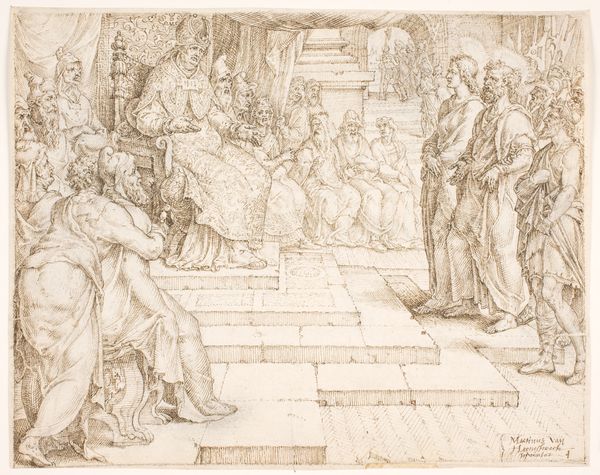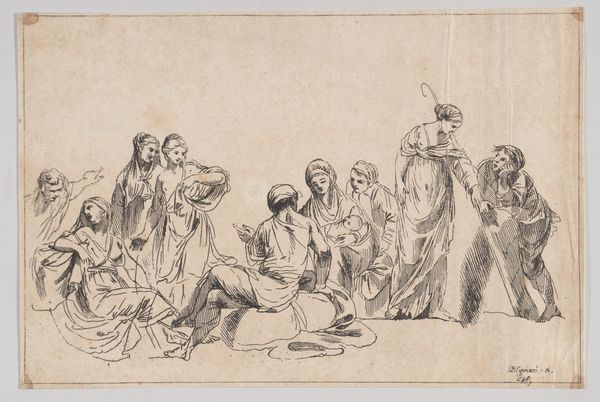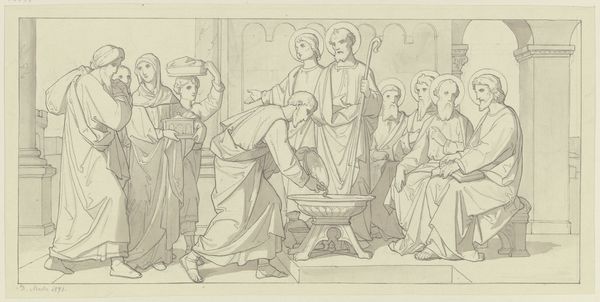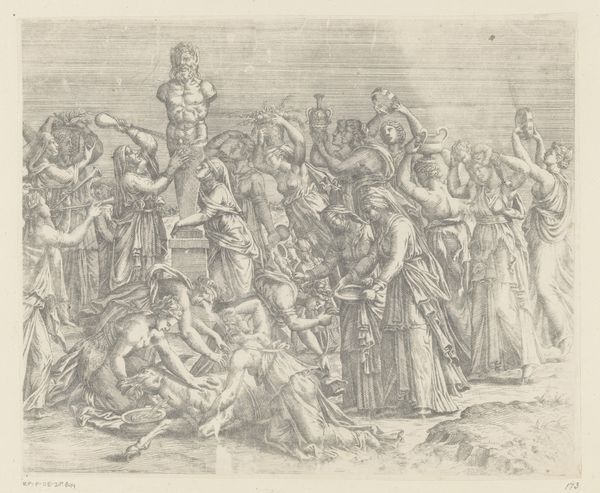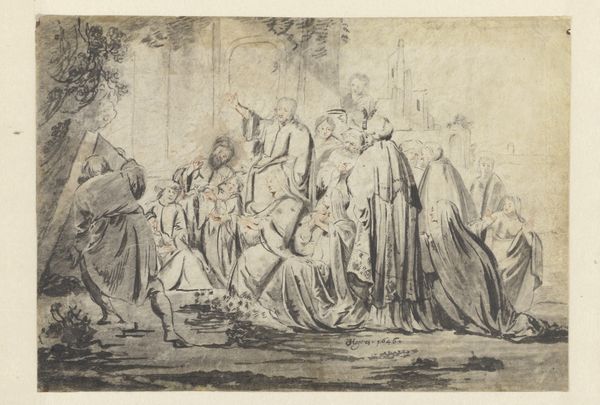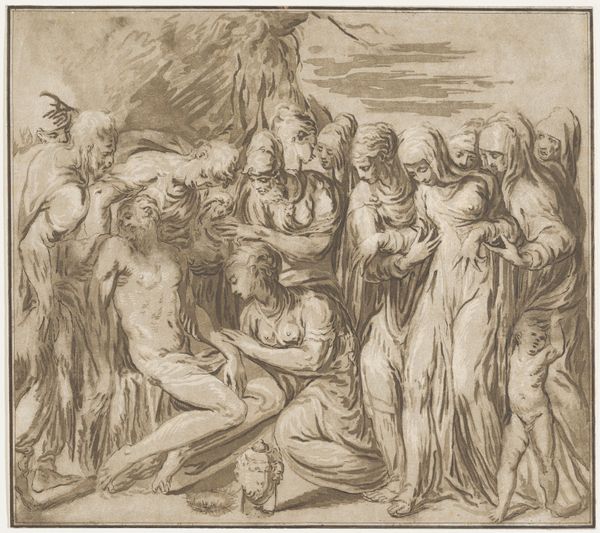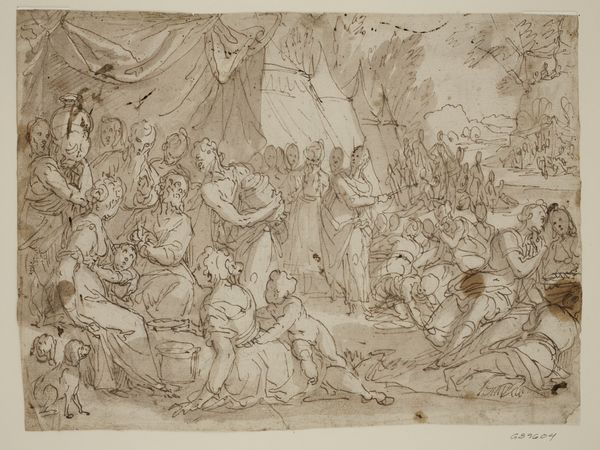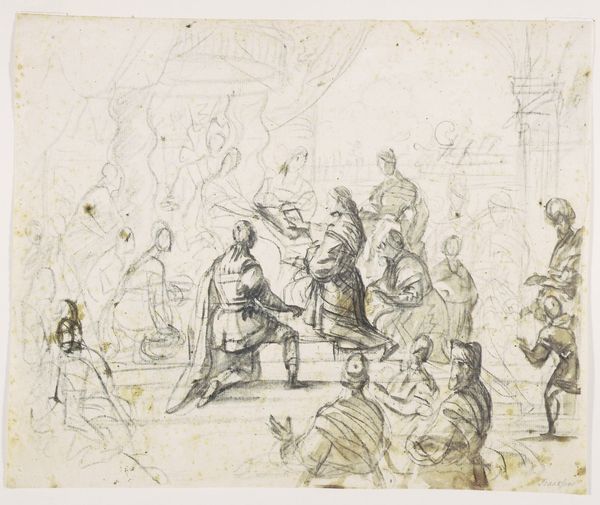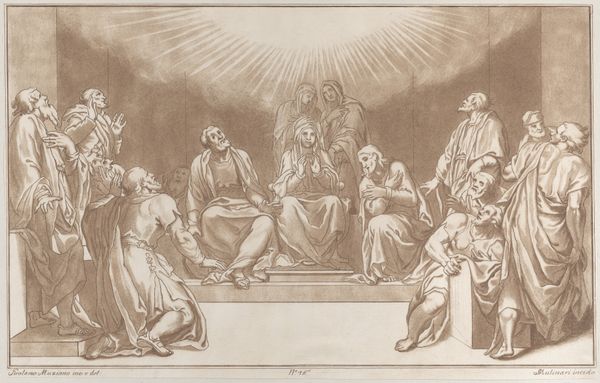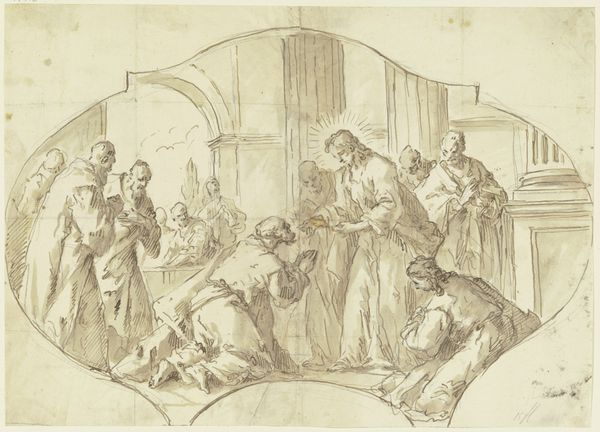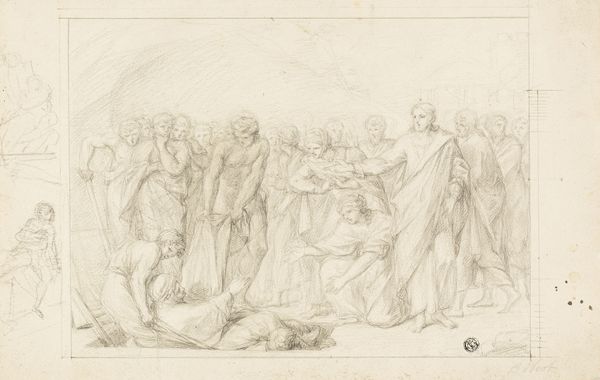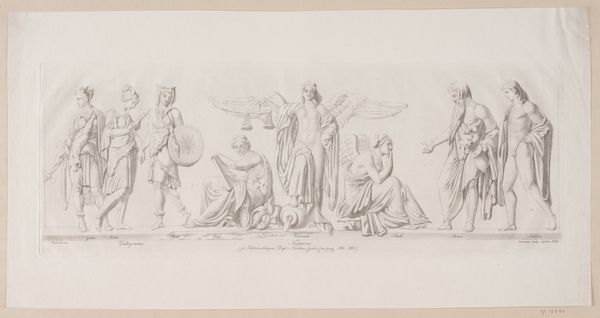
drawing, pencil
#
pencil drawn
#
drawing
#
toned paper
#
light pencil work
#
pencil sketch
#
11_renaissance
#
pencil drawing
#
ink drawing experimentation
#
pen-ink sketch
#
pencil
#
portrait drawing
#
pencil work
#
genre-painting
#
pencil art
Dimensions: 190 mm (height) x 227 mm (width) (bladmaal)
Curator: Welcome. We're looking at "A Group of Turkish Women Dining," a pencil drawing created anonymously sometime between 1555 and 1559. It's currently housed here at the SMK, the Statens Museum for Kunst. What are your initial thoughts? Editor: It’s delicate, almost ghostly. The light pencil work on toned paper gives it this ephemeral quality. You can almost feel the hand that sketched this scene. What’s the story behind it? Curator: Well, we don't know who created it, which is an important part of its story. Consider how artistic production in the 16th century was so closely tied to patronage. Someone commissioned, or perhaps collected, this glimpse into what was then seen as an "exotic" culture. The gaze is Western, clearly. Editor: It’s a document, essentially, crafted with pencil, ink, and observation. I am drawn to that action of sketching, how the artist must have moved through the space, fixing fleeting moments with light, but definitive lines. Note also the depiction of labor – or the absence of it, this being an aristocratic leisure scene. Curator: Precisely! Look at the setting. It’s not just about capturing faces, but presenting a lifestyle, a way of life that was carefully observed, interpreted, and then communicated to a European audience hungry for knowledge and perhaps titillation, about the Ottoman world. How much is truly observed versus imagined, following stereotypes? Editor: You're right. The “authenticity” is immediately suspect, refracted as it is through a specific cultural lens. I wonder about the type of pencil and paper; accessing high quality materials alone would place the artist and their patrons within a specific social sphere of class and commerce. It becomes more than just a "sketch;" it is an object loaded with meaning, from its production to its display in a museum like this one. Curator: It really highlights how much our understanding of the past is shaped by who gets to tell the story and through which media. Even a "simple" sketch speaks volumes about the dynamics between cultures, about representation, and the power structures inherent in observation. It also reminds us of what's lost when authorship remains anonymous. Editor: Indeed. Analyzing the materials, process and subject allows us to better unpack the complexities and contradictions in these representations, and appreciate its significance as both a historical artifact and material object. Curator: A fascinating work offering an open, important socio-historical context for interpretation and awareness. Editor: It definitely offers food for thought on material culture.
Comments
No comments
Be the first to comment and join the conversation on the ultimate creative platform.
